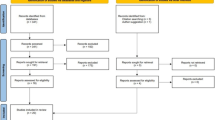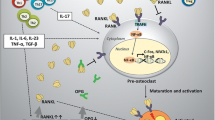Abstract
Objective
To determine whether resveratrol (Res) can correct osteoporosis induced in a rat model of male hypogonadism.
Methods
Thirty-two rats were randomly divided into 4 groups, 8 in each group; 1) a control sham group: underwent a similar surgical procedure for induction of orchiectomy (ORCD) without ligation of any arteries or veins or removal of the testis and epididymis; 2) a control + Res-treated group (Con+Res): underwent sham surgery similar to the control, but was then treated with Res, as described below; 3) an ORCD-induced group: bilateral ORCD surgery as described above, and 4) a ORCD+Res-treated group: bilateral ORCD surgery followed by Res treatment. Res treatment began 4 weeks after ORCD and continued for 12 weeks. After 12 weeks, bone mineral density (BMD) and bone mineral content (BMC) were measured in the tibia and femur of each rat’s right hind leg. Blood levels of bone turnover indicators such as deoxypyridinoline (Dpd), N-telopeptide of type I collagen (NTX I), alkaline phosphatase (ALP), and osteocalcin (OC), as well as receptor activator of nuclear factor kappa B (RANK) and osteoprotegerin (OPG) were assessed.
Results
ORCD significantly decreased BMD (P<0.01) and significantly increased bone resorption, manifested by increased RANK. In addition, it inhibited serum levels of OPG and OC. Res treatment after ORCD effectively increased serum levels of bone formation markers such as OPG and OC, compared with testisectomized rats (P<0.05).
Conclusion
Res could ameliorate bone loss induced by male hypogonadism, possible via restoration of the normal balance between RANK and OPG.
Similar content being viewed by others
References
Lerner UH. Bone remodeling in post-menopausal osteoporosis. J Dent Res 2006;85:584–595.
Robling AG, Castillo AB, Turner CH. Biomechanical and molecular regulation of bone remodeling. Ann Rev Biomed Eng 2006;8:455–498.
Riggs BL, Khosla S, Melton LJ,3rd. A unitary model for involutional osteoporosis: estrogen deficiency causes both type I and type II osteoporosis in postmenopausal women and contributes to bone loss in aging men. J Bone Miner Res 1998;13:763–773.
Burger H, de Laet CE, van Daele PL, Weel AE, Witteman JC, Hofman A, et al. Risk factors for increased bone loss in an elderly population: the Rotterdam Study. Am J Epidemiol 1998;147:871–879.
Kenny AM, Prestwood KM, Marcello KM, Raisz LG. Determinants of bone density in healthy older men with low testosterone levels. J Gerontol A Biol Sci Med Sci 2000;55:492–497.
Scopacasa F, Horowitz M, Wishart JM, Morris HA, Chatterton BE, Need AG. The relation between bone density, free androgen index, and estradiol in men 60 to 70 years old. Bone 2000;27:145–149.
Stanley HL, Schmitt BP, Poses RM, Deiss WP. Does hypogonadism contribute to the occurrence of a minimal trauma hip fracture in elderly men? J Am Geriatr Soc 1991;39:766–771.
Kwan Tat S, Padrines M, Theoleyre S, Heymann D, Fortun Y. IL-6, RANKL, TNF-alpha/IL-1: interrelations in bone resorption pathophysiology. Cytokine Growth Factor Rev 2004;15:49–60.
Simonet WS, Lacey DL, Dunstan CR, Kelley M, Chang MS, Lüthy R, et al. Osteoprotegerin: a novel secreted protein involved in the regulation of bone density. Cell 1997;89:309–139.
Halleen JM, Ylipahkala H, Alatalo SL, Janckila AJ, Heikkinen JE, Suominen H, et al. Serum tartrate-resistant acid phosphatase 5b, but not 5a, correlates with other markers of bone turnover and bone mineral density. Calcif Tissue Int 2002;71:20–25.
Seibel MJ. Biochemical markers of bone turnover: part I: biochemistry and variability. Clin Biochem Rev 2005;26:97–122.
Christgau S, Bitsch-Jensen O, Hanover Bjarnason N, Gamwell Henriksen E, Qvist P, Alexandersen P, et al. Serum CrossLaps for monitoring the response in individuals undergoing antiresorptive therapy. Bone 2000;26:505–511.
Francis RM. The effects of testosterone on osteoporosis in men. Clin Endocrinol 1999;50:411–414.
Lee NK, Sowa H, Hinoi E, Ferron M, Ahn JD, Confavreux C, et al. Endocrine regulation of energy metabolism by the skeleton. Cell 2007;130:456–469.
Oury J, Oury F. Osteocalcin, a key molecule for bone endocrine functions. Med Sci 2018;34:54–62.
Lumachi F, Ermani M, Camozzi V, Tombolan V, Luisetto G. Changes of bone formation markers osteocalcin and bone-specific alkaline phosphatase in postmenopausal women with osteoporosis. Ann N Y Acad Sci 2009;1:E60–E63.
Qaseem A, Forciea MA, McLean RM, Denberg TD. Treatment of low bone density or osteoporosis to prevent fractures in men and women: A clinical practice guideline update from the American College of Physicians. Ann Intern Med 2017;166:818–839.
Dai Z, Li Y, Quarles LD, Song T, Pan W, Zhou H, et al. Resveratrol enhances proliferation and osteoblastic differentiation in human mesenchymal stem cells via ER-dependent ERK1/2 activation. Phytomedicine 2007;14:806–814.
Baolin L, Inami Y, Tanaka H, Inagaki N, Iinuma M, Nagai H. Resveratrol inhibits the release of mediators from bone marrow-derived mouse mast cells in vitro. Planta Med 2004;70:305–309.
Knutson MD, Leeuwenburgh C. Resveratrol and novel potent activators of SIRT1: effects on aging and age-related diseases. Nutr Rev 2008;66:591–596.
Novakovic R, Ilic B, Beleslin-Cokic B, Radunovic N, Heinle H, Scepanovic R, et al. The effect of resveratrol on contractility of non-pregnant rat uterus: the contribution of K(+) channels. J Physiol Pharmacol 2013;64:795–805.
Lee AM, Shandala T, Nguyen L, Muhlhausler BS, Chen KM, Howe PR, et al. Effects of resveratrol supplementation on bone growth in young rats and microarchitecture and remodeling in ageing rats. Nutrients 2014;6:5871–5887.
Boissy P, Andersen TL, Abdallah BM, Kassem M, Plesner T, Delaisse JM. Resveratrol inhibits myeloma cell growth, prevents osteoclast formation, and promotes osteoblast differentiation. Cancer Res 2005;65:9943–9952.
Picard F, Kurtev M, Chung N, Topark-Ngarm A, Senawong T, Machado De Oliveira R, et al. Sirt1 promotes fat mobilization in white adipocytes by repressing PPAR-gamma. Nature 2004;429:771–776.
Eleawa SM, Sakr HF, Hussein AM, Assiri AS, Bayoumy NM, Alkhateeb M. Effect of testosterone replacement therapy on cardiac performance and oxidative stress in orchidectomized rats. Acta Physiol 2013;209:136–147.
Johnston CB, Dagar M. Osteoporosis in older adults. Med Clin North Am 2020;104:873–884.
Dupree K, Dobs A. Osteopenia and male hypogonadism: Rev Urol 2004;6 Suppl 6:30–34.
Golds G, Houdek D, Arnason T. Male hypogonadism and osteoporosis: The effects, clinical consequences, and treatment of testosterone deficiency in bone health. Int J Endocrinol 2017;4602129:16.
Taxel P, Kennedy DG, Fall PM, Willard AK, Clive JM, Raisz LG. The effect of aromatase inhibition on sex steroids, gonadotropins, and markers of bone turnover in older men. J Clin Endocrinol Metab 2001;86:2869–2874.
Khosla S, Oursler MJ, Monroe DG. Estrogen and the skeleton. Trends Endocrinol Metab 2012;23:576–581.
Orwoll ES, Klein RF. Osteoporosis in men. Endocr Rev 1995;16:87–116.
Bilezikian JP. Osteoporosis in men. J Clin Endocrinol Metab 1999;84:3431–3434.
Titorencu I, Pruna V, Jinga VV, Simionescu M. Osteoblast ontogeny and implications for bone pathology: an overview. Cell Tissue Res 2014;355:23–33.
Neve A, Corrado A, Cantatore FP. Osteoblast physiology in normal and pathological conditions. Cell Tissue Res 2011;343:289–302.
Yin Y, Ding L, Hou Y, Jiang H, Zhang J, Dai Z, et al. Upregulating microRNA-410 or downregulating Wnt-11 increases osteoblasts and reduces osteoclasts to alleviate osteonecrosis of the femoral head. Nanoscale Res Lett 2019;14:383.
Pepene CE, Crişan N, Coman I. Elevated serum receptor activator of nuclear factor kappa B ligand and osteoprotegerin levels in late-onset male hypogonadism. Clin Invest Med 2011;34:15365.
Morgans AK, Smith MR. RANKL-targeted therapies: the next frontier in the treatment of male osteoporosis. J Osteoporos 2011;941310:15.
Osterberg EC, Bernie AM, Ramasamy R. Risks of testosterone replacement therapy in men. Indian J Urol 2014;30:2–7.
Feng YL, Jiang XT, Ma FF, Han J, Tang XL. Resveratrol prevents osteoporosis by upregulating FoxO1 transcriptional activity. Int J Mol Med 2018;41:202–212.
Kondo H, Limoli C, Searby ND, Almeida EA, Loftus DJ, Vercoutere W, et al. Shared oxidative pathways in response to gravity-dependent loading and gamma-irradiation of bone marrow-derived skeletal cell progenitors. Radiats Biol Radioecol 2007;47:281–285.
Stolzing A, Jones E, McGonagle D, Scutt A. Age-related changes in human bone marrow-derived mesenchymal stem cells: consequences for cell therapies. Mech Ageing Dev 2008;129:163–173.
Feng YF, Wang L, Zhang Y, Li X, Ma ZS, Zou JW, et al. Effect of reactive oxygen species overproduction on osteogenesis of porous titanium implant in the present of diabetes mellitus. Biomaterials 2013;34:2234–2243.
Wu X, Li J, Zhang H, Wang H, Yin G, Miao D. Pyrroloquinoline quinone prevents testosterone deficiency-induced osteoporosis by stimulating osteoblastic bone formation and inhibiting osteoclastic bone resorption. Am J Transl Res 2017;9:1230–1242.
Drake MT, Khosla S. Male osteoporosis. Endocrinol Metab Clin North Am 2012;41:629–641.
Xia N, Daiber A, Förstermann U, Li H. Antioxidant effects of resveratrol in the cardiovascular system. Br J Pharmacol 2017;174:1633–1646.
Silva P, Sureda A, Tur JA, Andreoletti P, Cherkaoui-Malki M, Latruffe N. How efficient is resveratrol as an antioxidant of the Mediterranean diet, towards alterations during the aging process? Free Radic Res. 2019;53:1101–1112.
Zhou T, Yan Y, Zhao C, Xu Y, Wang Q, Xu N. Resveratrol improves osteogenic differentiation of senescent bone mesenchymal stem cells through inhibiting endogenous reactive oxygen species production via AMPK activation. Redox Rep 2019;24:62–69.
Durbin SM, Jackson JR, Ryan MJ, Gigliotti JC, Alway SE, Tou JC. Resveratrol supplementation influences bone properties in the tibia of hindlimb-suspended mature Fisher 344 × Brown Norway male rats. Appl Physiol Nutr Metab 2012;37:1179–1188.
Gehm BD, McAndrews JM, Chien PY, Jameson JL. Resveratrol, a polyphenolic compound found in grapes and wine, is an agonist for the estrogen receptor. Proc Natl Acad Sci U S A 1997;94:14138–14143.
Author information
Authors and Affiliations
Contributions
Conceptualization, investigation, methodology, writing and editing, resources, supervision, and visualization: Hussein F. Sakr; investigation, methodology, and writing: Boudaka Ammar; investigation, methodology, and conceptualization: Amira Alkharusi; investigation and methodology: I. Al-Lawati; writing and revision: M. Alkhateeb; writing and editing, and resources: Basem H. Elesawy.
Corresponding author
Additional information
Conflict of Interest
The authors declared no conflict of interest.
Supported by Sultan Qaboos University, Internal Grant/Medicine/Physiology/18/02
Rights and permissions
About this article
Cite this article
Sakr, H.F., Ammar, B., AlKharusi, A. et al. Resveratrol Modulates Bone Mineral Density and Bone Mineral Content in A Rat Model of Male Hypogonadism. Chin. J. Integr. Med. 29, 146–154 (2023). https://doi.org/10.1007/s11655-022-2895-2
Accepted:
Published:
Issue Date:
DOI: https://doi.org/10.1007/s11655-022-2895-2




